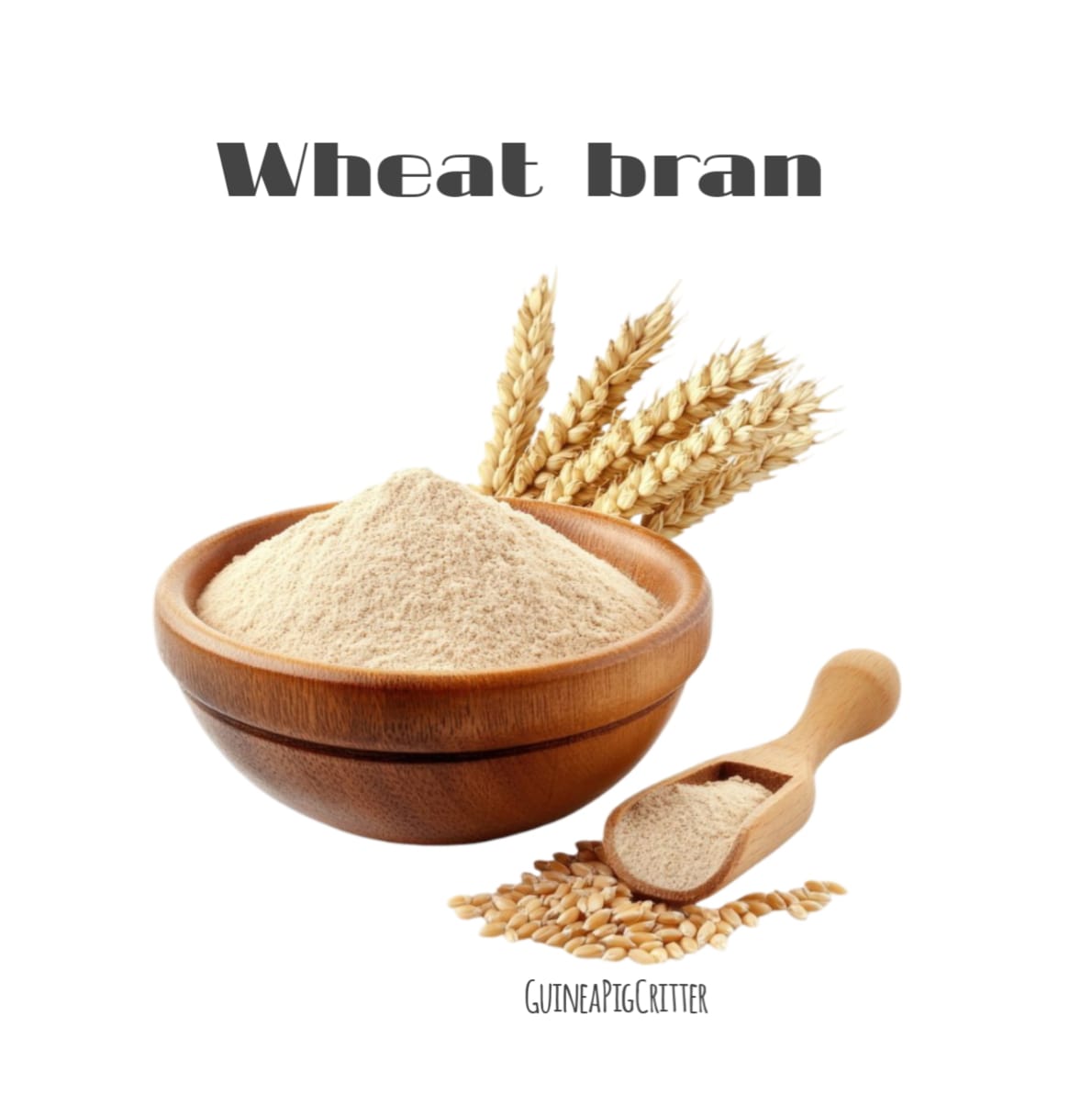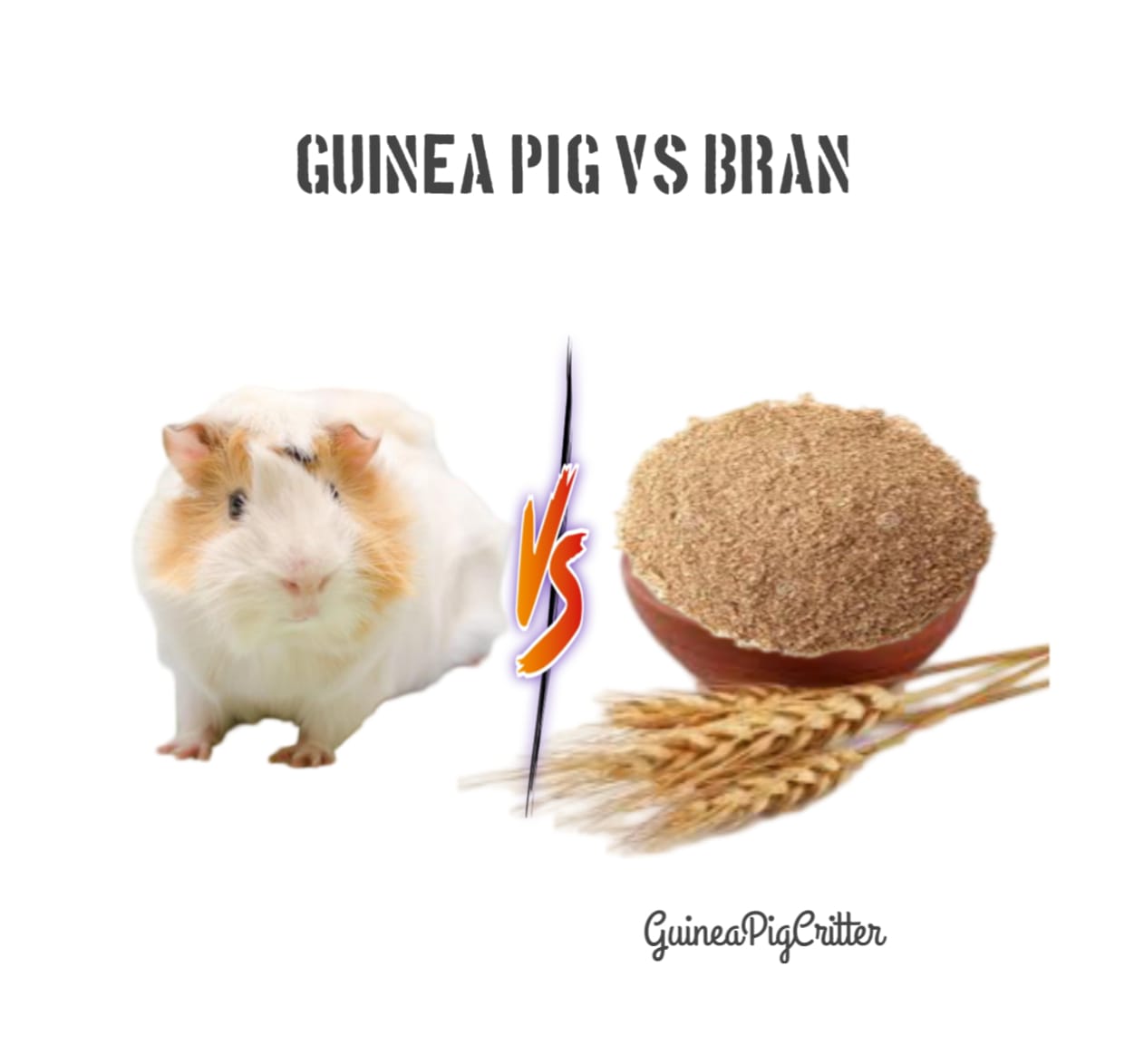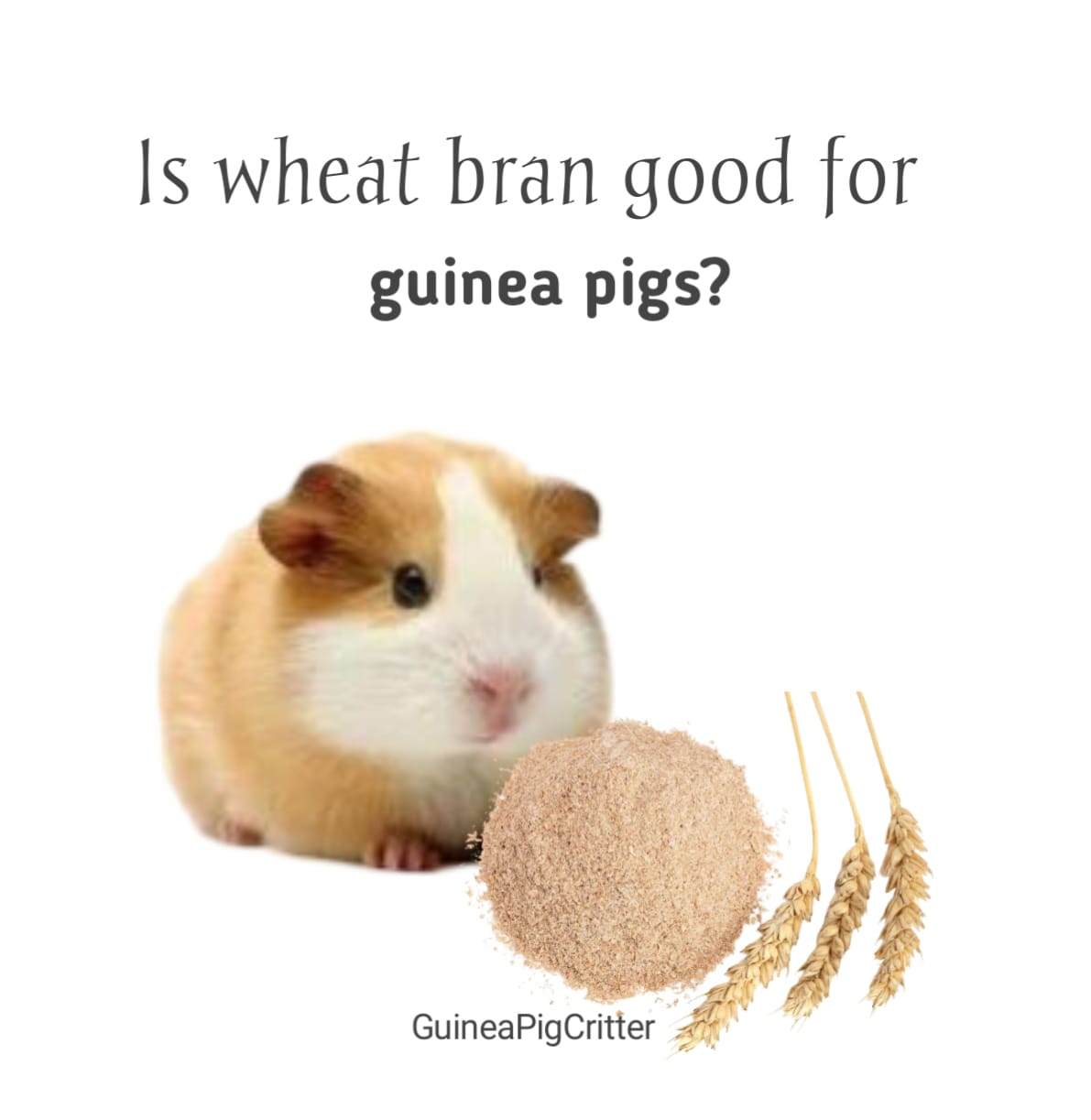By far, the hardest task for any guinea pig is providing a balanced, safe, and healthy diet to their pet. Although hay, fresh vegetables, and pellets predominate a guinea pig’s diet, a number of pet ask if any other food, wheat bran for example, can be beneficial.
Wheat bran is quite frequently advertised as being richly fibrous and aiding human digestion, so it would not be surprising if it appeared useful for guinea pigs too. This being said, it remains key to examine the food’s nutritional profile, potential benefits, and negative effects before one begins versus the other.
Check this post:- Do guinea pigs need baths?
Fiber’s Role in Husk Composition
Wheat bran is rich in so many nutrients families which are useful to human as well as to some animals, however for guinea pig these must be carefully evaluated. These are:
Fiber: wheat bran is relatively high in fiber round 15 – 20% by weight which is satisfying as it helps promote regular bowel movements. Fiber is also crucial in guinea pigs’ diet for regular digestive motility in guinea pigs which is pretty high.
This amount ranges between 15 – 20 g per day but only for some time because it’s dense. It’s also saturated with fibers, containing 15 – 20 g per day.
Minerals: wheat bran is rich in several minerals, including magnesium, manganese, and iron. Magnesium helps with nerve and muscle function, and iron is essential for blood health.
B vitamins: wheat bran includes b vitamins, particularly b6 and b3 (niacin), which support metabolism, energy production, and a healthy nervous system.
Do guinea pigs benefit from these nutrients?
While many of these nutrients are beneficial in general, guinea pigs don’t require all of them in the same proportions as other animals. For instance, guinea pigs need significantly higher levels of vitamin c, which wheat bran does not provide. They can develop scurvy (a disease resulting from vitamin c deficiency) without it, making vitamin c-rich vegetables like bell peppers and leafy greens far better choices than wheat bran for supplemental nutrition.
Is wheat bran safe for guinea pigs?
As strict herbivores, guinea pigs live off their dietary requirements which is mostly grasses and hay which are high in fiber. In contrast to omnivores, guinea pigs do not have some digestive enzymes and therefore it is quite hard for them to digest anything other than food they are accustomed to.
Although it is a good source of fiber, wheat bran does contain a lot of starch and other substances that guinea pigs digest quite poorly. Overzealous wheat bran consumption can also alter the children’s gut flora balance, resulting in gastrointestinal problems.
Balance of calcium to phosphorus
There is no doubt however that guinea pigs have very specific requirement in terms of balanced calcium and phosphorus levels. Calcium uptake can hinder due to a surplus of phosphorus and this can lead to health implications such as brittle bones, teeth problems, and urinary tract issues.
Wheat bran has a high phosphorus content ratios in comparison to calcium which can lead to guinea pigs developing bladder stones and other urinary concerns especially if they are prone to it.
Gangrenous cystitis risk triggered by bladder stones
Bladder stones (urolithiasis) are regarded as a painful condition and it is one of the most common concerns in guinea pigs, especially those that consume an unbalanced diet that is high in phosphorus or calcium.
The phosphorus nutrient contained in wheat bran disturbs the nitrogen balance best suited to maintaining a good urinary system in guinea pigs making it inappropriate for guinea pig.
Wheat bran benefits (if any)
When it comes to making wheat bran a staple food, it is not usually advisable for health reasons, but there can be some benefits if used occasionally.
Encouragement of gut health
Fiber is indispensable to guinea pigs. Wheat bran gives the additional boost of fiber. If a guinea pig suffers from mild constipation or if they are in need of a mild increase of fiber, a small amount of wheat bran should help get their bowels moving. But, this practice should be left as the last option; hay is much more fiber enhancing but safe for consumption.
Nutritive value
Wheat bran has small quantities of certain vitamins such as b6 which is crucial in nerve functioning as well as in metabolism of protein. However, guinea pigs can often receive all the b vitamins they require from the normal diet they take, especially when there are fresh greens and balanced and good quality pellets offered.
Improper understanding of “benefits”
The risks need to be examined closely prior to assuming that recommendations are going to help. More so, wheat bran nutrients are not often flushing out of guinea pigs and they can be derived from greener, natural dietary sources more suitable for the guinea pigs.
Wheat bran and its possible problems for guinea pigs
This will be a good place to further consider the risks wheat bran might have. Hence we can further justify why wheat bran is not a good option for guinea pigs.
Dietary adaptation to fibrous food
Guinea pigs’ digestion has evolved to suit their fibrous, coarse, low-sugar diets. Wheat bran, being quite fibrous and dense in starches, can be difficult for them to consume in large amounts. Giving excessive wheat bran can result in a guinea pig experiencing tummy aches, excessive gasses or other abdominal complaints like bloating which is quite dangerous as the animal cannot lose the gasses by vomiting.
Any discomfort in the digestive system can worsen and necessitate visits to the vet if there are long-lasting symptoms which the animal displays.
Symptoms relating to consumption of excess wheat bran
Some of these signs include over dependence on wheat bran in guinea pigs:
Loss of appetite: a guinea pig that is feeling bloated to an extent may not wish to eat, causing all sorts of health difficulties in the future.
Diarrheic or excretion of soft stools: it results in a gentle belly upset and any signs of it ought to warrant dietary changes at the earliest opportunity.
Lack of energy: this implies that since a guinea pig may be in discomfort, they may appear disinterested or even out of physically active interactions.
Calcium and phosphorus levels
The wheat bran’s ratio of phosphorus to calcium poses a problem since it is high. If there is an excessive amount of phosphorus, it will limit calcium which is vital for guinea pigs. Insufficient amounts of calcium can also lead to bone weakness, or more severely bladder.
Why bladder stones are a great concern
Bladder stones can develop in guinea pigs due to poor bone or meat diets which fails to provide sufficient calcium and phosphorus levels. These state of the conditions in guinea pigs together with the presence of stones can result in:
Urge to squeak while urinating: a guinea pig may squeak during urination.
Weight loss and weakness: weight loss and weakness from bleeding are visible signs that cannot wait until the next immediate veterinary appointment.
Painful attempts to urinate very often: a guinea pig that is affected may have struggles trying to reach the point of getting relieve more frequently than normal.
Stressors of overfeeding & lack of nutrition balance
Another consideration in the effect of overfeeding wheat bran is a lack of more balanced diet constituents. This species needs mainly first class hay with some green vegetables and even than better – fortified pellets. Plenty of wheat bran can be a fill in the tummy, and in the long run, this can hinder the intake of other more essential food types.
How to feed wheat bran to guinea pigs (if it cannot be avoided)
In case you want to include wheat bran in your guinea pig’s diet as an occasional treat, then there are some rules that must be observed.
Small portions please
The amount served must not exceed half a teaspoon. This amount also decreases the risk factor as a higher amount will not be experienced by the guinea pig.
A schedule too frequent
Give wheat bran maximum once every few weeks and as much as possible don’t make it a regular diet. This assists to minimize any chances of nutrient deficiencies or any chances of digestive problems.
Watch for any changes
Once wheat bran is introduced, watch your guinea pig after. If any changes in the consistency of stools, feeding or level of activity are noticed, then they are signs of possible digestive problems. In case you notice any adverse symptoms all these practices should be ceased and a veterinarian sought for further assistance.
See this post:-Can Guinea Pigs Wear Sweaters?
Wheat bran alternatives for fiber and other nutrition substitutes to use other
Here are better options available safer than wheat bran, for guinea pig carriers wishing to vitamin orient or simply add some variation to the food.
Timothy hay
Guinea pigs eat this as their staple food, timothy hay contains the right fiber content so as to help the diet of guinea pigs. It also serves the purpose of wearing out teeth of guinea pigs that keep on growing. Guinea pigs must be provided with good quality timothy hay for most of the time.
Orchard grass and meadow hay
This provide dietary supplements with the required diversity in texture and flavors yet low calorie content and are safe for everyday feeding. They fit easily into the feeding regime of guinea pigs furnishing fiber of low calcium or phosphorus levels or both.
Dark leafy greens
Greens such as romaine lettuce, cilantro and dandelion leaves are safe and should be offered since they supply vitamin c. Strive to provide guinea pigs with leafy greens in small portions each day to provide nutrients while preventing excess calories.
Bell peppers
Having a high vitamin c concentration, bell peppers are a great addition to a guinea pig’s diet. They are also hydrating and nutritious, so they do not add up to the digestive challenges or an overabundance of nutrients. Use as a garnish with other veggies and fruits for a balanced flavor in moderation.
Conclusion
To conclude, concerning the issue of toxicity of wheat bran, guinea pigs do not face any detriment. However, it does not provide any nourishment and is suboptimal as a staple part of any diet. Though there is some fiber present, its high phosphorus content coupled with the potential for digestive distress makes it a poor option.
The ideal diet for guinea pigs consists of hay with an addition of fresh vegetables and specialized pellets. This regimen ensures that your pet lives a long healthy life. You are ensuring the wellbeing of your guinea pig by sticking to good natural elements, and not worrying about extra inclusions like wheat bran.
Avoid introducing new foods until you have consulted a veterinarian specializing in exotic pets, and ensure that your dietary changes are safe and beneficial for your furry friend.


